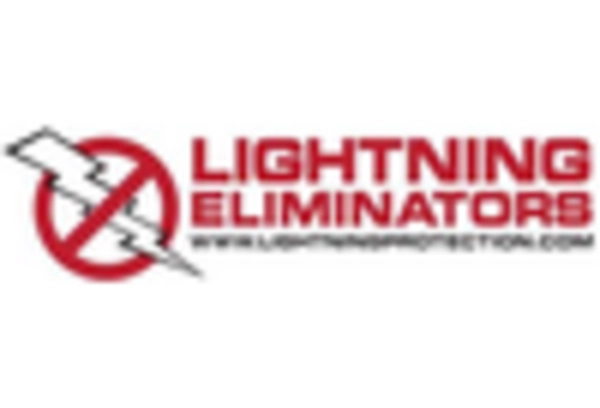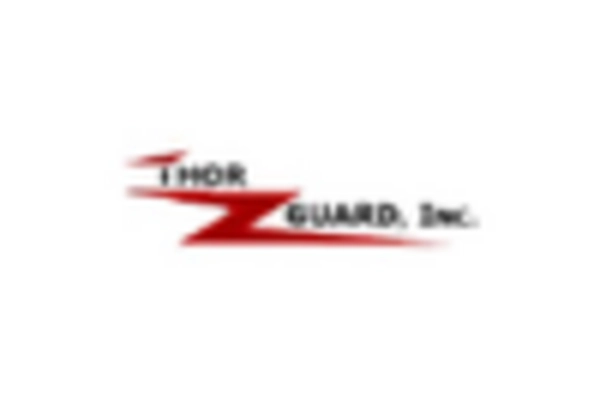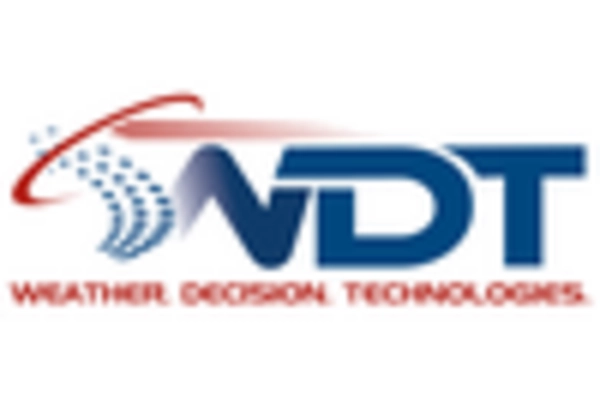Regulatory Compliance and Standards
The establishment of stringent regulatory compliance and safety standards in various industries is driving the growth of the airborne lightning-detection-system market. Organizations are required to adhere to safety regulations that mandate the implementation of effective lightning detection systems, particularly in sectors such as aviation and construction. This regulatory landscape is expected to propel market growth, with estimates suggesting a compound annual growth rate (CAGR) of around 10% over the next few years. As companies strive to meet compliance requirements, investments in advanced lightning detection technologies will likely increase, further solidifying the role of the airborne lightning-detection-system market in ensuring safety and operational integrity.
Increased Investment in Infrastructure
The US government's commitment to enhancing infrastructure resilience is a key driver for the airborne lightning-detection-system market. With substantial investments earmarked for infrastructure projects, there is a growing recognition of the need for advanced safety measures. The Federal Aviation Administration (FAA) and other agencies are increasingly incorporating lightning detection systems into their safety protocols. This trend is expected to result in a market growth rate of approximately 15% annually over the next five years. As infrastructure projects expand, the demand for reliable lightning detection systems will likely rise, positioning the airborne lightning-detection-system market as a critical component of national safety initiatives.
Integration with Advanced Technologies
The integration of airborne lightning-detection systems with advanced technologies such as artificial intelligence (AI) and machine learning is transforming the landscape of the airborne lightning-detection-system market. These technologies enable more accurate predictions and real-time data analysis, enhancing the effectiveness of lightning detection. As organizations increasingly adopt smart technologies, the market is likely to experience a surge in demand. For instance, the incorporation of AI can improve the accuracy of lightning forecasts by up to 30%, making systems more reliable. This trend not only boosts the operational capabilities of existing systems but also attracts new investments, further propelling the growth of the airborne lightning-detection-system market.
Rising Demand for Weather Safety Solutions
The increasing frequency of severe weather events in the US has heightened the demand for advanced weather safety solutions, including the Airborne Lightning Detection System Market. As organizations and individuals seek to mitigate risks associated with lightning strikes, the market is projected to grow significantly. According to recent estimates, the market could reach a valuation of over $500 million by 2027, driven by the need for reliable detection systems. This demand is particularly pronounced in sectors such as aviation, outdoor events, and construction, where safety is paramount. The airborne lightning-detection-system market is thus positioned to benefit from this trend, as stakeholders prioritize investments in technologies that enhance safety and operational efficiency.
Expansion of Outdoor Recreational Activities
The growing popularity of outdoor recreational activities in the US is contributing to the expansion of the airborne lightning-detection-system market. As more people engage in activities such as camping, hiking, and sports, the need for safety measures against lightning strikes becomes increasingly important. This trend is particularly relevant for organizations that host outdoor events, where the safety of participants is a priority. The market is projected to grow by approximately 12% annually as event organizers and recreational facilities invest in reliable lightning detection systems. Consequently, the airborne lightning-detection-system market is likely to see increased adoption as stakeholders prioritize safety in outdoor environments.

















Leave a Comment